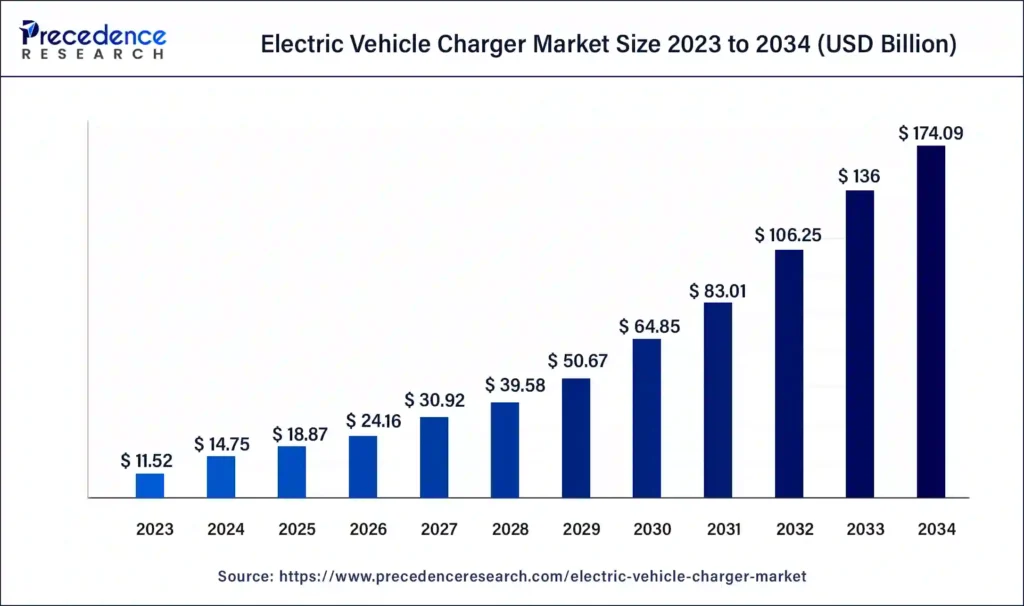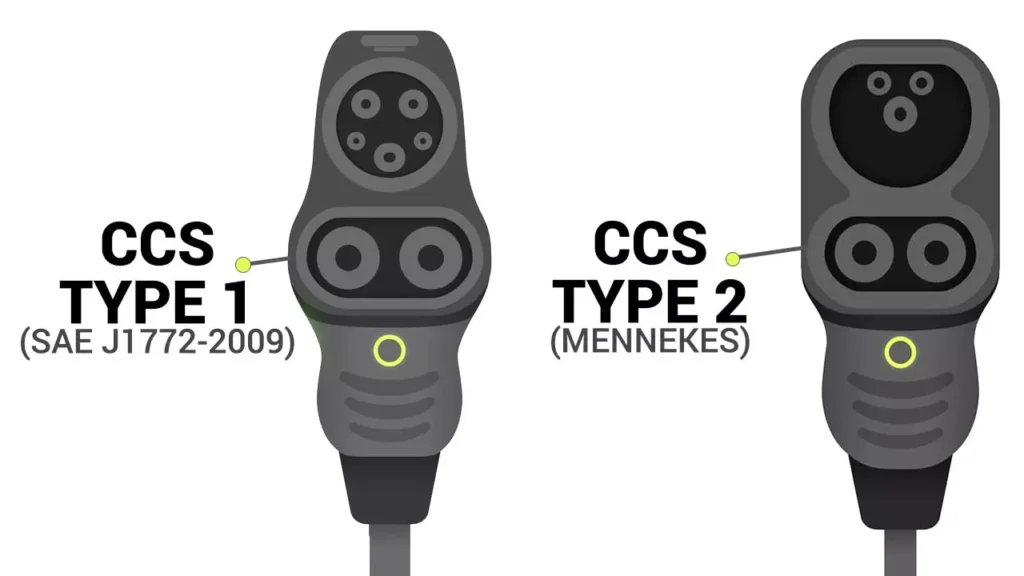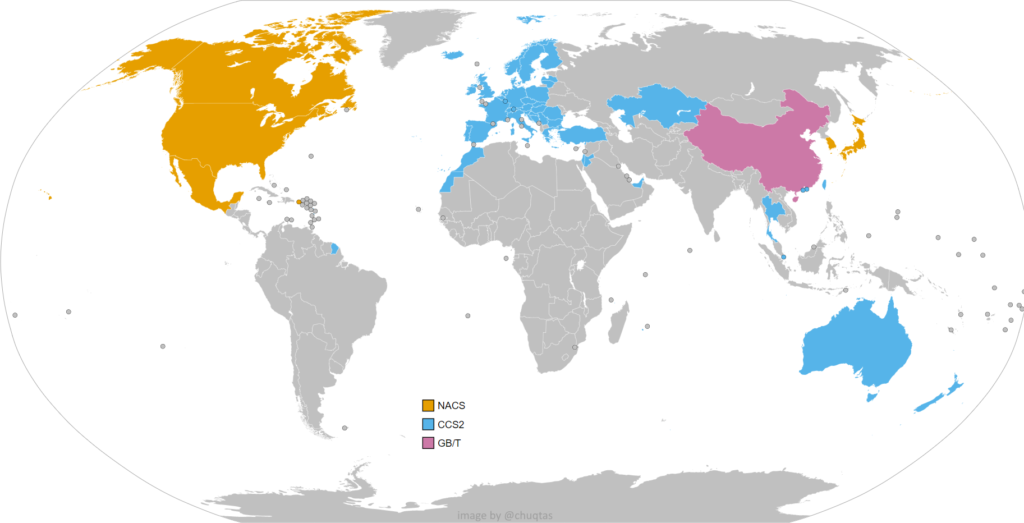The global EV charging landscape is diverse. Each region has its own approach, driven by unique factors like government policies, technological advancements, and consumer behavior. Understanding these nuances is crucial for success.
The EV charging market is booming, but it’s not a one-size-fits-all scenario. Let’s dive into the specifics of each major region.
Global Electric Vehicle Charging Market Overview: Same Vision, Different Paths?
While everyone aims for an electric future, the paths taken differ greatly. Some regions prioritize rapid growth, others focus on sustainability, and yet others grapple with standardization.

Global electric vehicle sales and forecasts: Which regions are the growth engines?
China is currently the world’s largest EV market and the fastest-growing charging station market. Europe is also experiencing rapid growth. The North American market is growing steadily, driven by the US, although charging network construction is lagging.
Charging pile market size and forecasts: How big is the cake, and who gets the most?
China has the largest charging station market, followed by Europe. Asia-Pacific (excluding China) shows potential but uneven development.
Core driving factors: Policies, technologies, and capital, who is the main driver?
In China, government policies are the primary driver. Europe also uses policies. In North America, it’s a mix of policy, consumer preferences, and oil prices.
| Region | Growth Engine | Market Size | Key Driver |
| China | Largest EV market, fastest-growing charging market | Largest | Government policies, subsidies |
| Europe | Rapid EV and charging infrastructure growth | Second Largest | Policy targets, sustainability focus |
| North America | Steady growth, US-driven | Growing, but lagging in infrastructure | Policies, oil prices, consumer preferences |
| Asia-Pacific | High potential, uneven development | Varies, Japan/Korea tech-focused, SEA lagging | Policies, technological level (varies by country) |
| Latin America | Infancy, low EV penetration | Smallest | Starting to gain attention, future growth potential |
North American Charging Market: Standardization Disputes and Policy Games?
The North American market is characterized by a clash of standards and a complex interplay of federal and state policies. This impacts how manufacturers and charging providers operate.

Charging standards: CCS1 vs. NACS, who will win, and what does it mean for manufacturers?
The main battle is between CCS1 (Combined Charging System) and NACS (North American Charging Standard, led by Tesla). The outcome will impact which connectors manufacturers prioritize.
Federal and state policies: How do subsidies affect the market landscape?
Federal subsidies exist, but state-level policies vary significantly, creating a fragmented market.
Main participants: Tesla, ChargePoint, EVgo, what is the competitive situation?
Tesla has a significant presence due to its Supercharger network. ChargePoint and EVgo are other major players.
Business models: Subscription, pay-per-use, free charging, which is more popular?
Subscription models and pay-per-use are common. Free charging is less prevalent, often offered as a perk.
| Feature | CCS1 | NACS (Tesla) |
| Connector Type | Combined AC/DC | Tesla-specific, smaller |
| Market Share | Widely used by most OEMs | Dominant in Tesla vehicles |
| Future Outlook | Uncertain, potential shift | Growing adoption by other manufacturers |
European Charging Market: Diversified Competition Under Unified Standards?
Europe presents a more unified front on standards, but competition is diverse, with energy companies, car manufacturers, and independent operators vying for market share.

Charging standards: CCS2 dominates, but regional differences still exist?
CCS2 is the dominant standard, though some regional variations in voltage and current exist. The Maximum AC is 480V and current is 63A. DC maximun voltage is 1000V and the current is 200A.
EU and national policies: How to coordinate to drive charging infrastructure construction?
The EU provides a regulatory framework, but individual countries have their own policies and incentives.
Main participants: Ionity, Allego, Enel X, who is the leader?
Ionity (a joint venture of several automakers), Allego, and Enel X are major players.
Business models: Energy companies, car manufacturers, independent operators, how to cooperate and win-win?
Energy companies, car manufacturers, and independent operators are all involved, often through partnerships. The Business model are charging fees, also explorations into new models like energy managment.
| Player Type | Examples | Strategy |
| Energy Companies | Enel X | Leverage existing infrastructure, offer integrated energy services |
| Car Manufacturers | Ionity (BMW, Daimler, Ford, VW) | Build charging networks to support EV sales |
| Independent Operators | Allego | Focus solely on charging infrastructure |
Chinese Charging Market: Leading in Scale, Innovative in Model?
China’s market is massive, driven by strong government support and characterized by rapid innovation. However, it operates under a distinct standard (GB/T) which creates a barrier for international compatibility.

Charging standards: GB/T stands out, how does it affect the international market?
The GB/T standard is unique to China. This limits interoperability with international standards like CCS and CHAdeMO.
Government-led: How do policies shape the market landscape?
Government policies, including subsidies and mandates, heavily influence the market’s development.
Main participants: State Grid, TGood, Star Charge, a three-legged situation?
State Grid, TGood (Teld), and Star Charge are major players. And third-part platforms like Nenglian Zhidi.
Business models: Operator-led, car manufacturer participation, platform integration, which has more potential?
Charging service fees are still the main source of income, but the proportion is too high.
The main players are exploring new models like photovoltaic energy storage integration.
| Business Model | Description | Potential |
| Operator-led | Charging operators build and manage networks | Dominant model, but facing profitability challenges |
| Car Manufacturer | Automakers build charging networks for their customers | Growing, enhances brand loyalty |
| Platform Integration | Third-party platforms connect users with various charging networks | Potential for greater efficiency and user convenience |
Charging Markets in Other Asia-Pacific Regions: Opportunities and Challenges in Emerging Markets?
The Asia-Pacific region outside of China is a patchwork of markets, each with its own trajectory. Some, like Japan and South Korea, are technologically advanced but smaller in scale, while others, like Southeast Asia, hold immense potential but face infrastructural hurdles.
Japan: CHAdeMO’s persistence and transformation?
Japan primarily uses the CHAdeMO standard, although CHAdeMO is now cooperationg with China, in order to developing ChaoJi charging interface.
South Korea: Rapid growth driven by policies?
South Korea is experiencing rapid growth, driven by supportive government policies. The number of charging stations in Korea is expected to increase by 39% YoY.
Southeast Asia: Huge potential, but lagging infrastructure?
Southeast Asia has significant potential due to its large population and growing economies, but charging infrastructure is underdeveloped.
Australia: Dispersed market, accelerating integration?
Australia faces challenges due to its vast geography and dispersed population, but the market is starting to consolidate.
| Region | Standard(s) | Policy Support | Market Stage | Challenges |
| Japan | CHAdeMO primarily | Moderate | Mature, but smaller | Aging infrastructure |
| South Korea | CHAdeMO, CCS | Strong | Rapid Growth | – |
| Southeast Asia | Various, non-unified | Developing | Emerging | Infrastructure deficit |
| Australia | Type 2, CCS | Growing | Fragmented | Geographical dispersion |
Latin American Charging Market: Exploration and Breakthrough in the Starting Stage?
Latin America represents a long-term opportunity, but it’s currently in its infancy. Early movers who can navigate the challenges of infrastructure development and policy uncertainty stand to gain in the future.
Brazil: Policy support and challenges
Brazil, as the largest economy in Latin America, has begun to implement policies to encourage EV adoption, although challenges remain in terms of infrastructure.
Mexico: Opportunities and challenges
Mexico, as a major automotive manufacturer, has the potential to become a significant EV market, but faces similar infrastructure and policy hurdles as other countries in the region.
Other countries: Market in its infancy
Other countries in Latin America are at even earlier stages of EV adoption and charging infrastructure development.
Main participants in the Latin American market
The main participants in the Latin American charging market include international players, local energy companies, and startups.
Business model exploration
Various business models are being explored, including government-supported initiatives, private investments, and public-private partnerships.
| Country | Policy Support | Challenges | Key Players |
| Brazil | Emerging, but with room for improvement | Infrastructure, grid capacity | International and local companies |
| Mexico | Growing, tied to automotive manufacturing | Infrastructure, policy consistency | International and local companies |
| Others | Limited, varies significantly by country | Infrastructure, economic instability | Varies |
Global Layout Strategy for Cross-National Charging Pile Enterprises: How to Respond to Diversified Challenges?
Going global isn’t simply about exporting your existing product. It requires a tailored approach, understanding local regulations, adapting your technology, and building strong relationships.

Product localization: How to meet the technical standards and user demands in different markets?
Adapt products to meet local charging standards (e.g., CCS, CHAdeMO, GB/T), voltage requirements, and language preferences.
Partner selection: How to establish mutually beneficial relationships with local enterprises?
Collaborate with local utilities, installers, and service providers who understand the market.
Market entry strategy: How to choose the right market and entry timing?
Prioritize markets with supportive policies, growing EV adoption, and manageable competition.
Risk management: How to respond to policy, competition, and technological changes?
Stay informed about policy changes, monitor competitor activities, and invest in R&D to adapt to evolving technologies.
| Strategy | Action | Benefit |
| Localization | Adapt products to local standards, languages | Increased market acceptance, compliance |
| Partnerships | Collaborate with local companies | Access to local expertise, networks, and resources |
| Market Entry | Choose markets strategically, based on readiness | Higher probability of success, reduced risk |
| Risk Management | Monitor policy, competition, technology; adapt accordingly | Flexibility, resilience to changing market conditions |
Future Trend Outlook: Where is the Global Charging Pile Market Heading?
The future of EV charging is dynamic, with advancements in technology, shifts in market dynamics, evolving policies, and innovative business models shaping the landscape.

Technology: Fast charging, wireless charging, V2G, who will lead the future?
High voltage fast charging (800V and above) is the development direction. Also, V2G techonolgy is the future development direction. Wireless charging is convenient but needs further development.
Market: Accelerating integration or diversified development?
The market shows signs of both consolidation (mergers and acquisitions) and diversification (new entrants and technologies).
Policy: Standardization, interoperability, how to drive global market coordination?
Policies promoting standardization and interoperability are crucial for global market growth.
Business model: Innovation, integration, how to create more value?
Innovative business models, such as integrating charging with renewable energy sources or offering value-added services, will be key.
| Trend | Description | Impact |
| Fast Charging | Higher power levels (350kW+) for reduced charging times | Improved user experience, increased adoption |
| Wireless Charging | Charging without physical connectors | Convenience, potential for dynamic charging (while driving) |
| V2G | Vehicles can send power back to the grid | Grid stability, potential revenue for EV owners |
| Standardization | Global efforts to unify charging standards | Reduced costs, improved interoperability |
Conclusion
The global EV charging market is complex and varied. Success requires understanding regional differences, adapting to local needs, and anticipating future trends. China leads in scale and growth, Europe in standardization, and North America in a standardization battle. Other regions present unique opportunities and challenges, requiring a deep understanding of local landscapes.
As an experienced manufacturer of EV charging products, TX produces products that are safe, environmentally friendly, and have superior performance. If you have any needs, please feel free to contact us.

